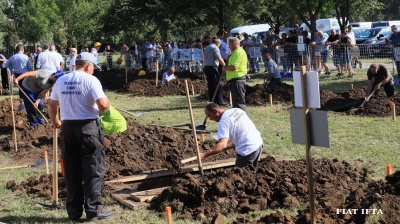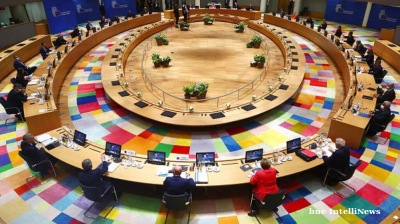Business conditions in Poland’s manufacturing sector continued to deteriorate in July, though at a slower pace than the month before, S&P Global said on August 1.
The S&P Global Poland Manufacturing PMI rose to 45.9 in July from 44.8 in June. While the increase signalled a modest improvement, the reading remained well below the 50-point threshold that separates growth from contraction and indicated the second-sharpest monthly decline since mid-2024. All five components of the index contributed to the rise, though only suppliers’ delivery times made a positive contribution overall.
“Poland's manufacturers reported a further marked deterioration on operating conditions in July,” Trevor Balchin, economics director at S&P Global Market Intelligence, said. “The headline PMI remained firmly inside negative territory despite staging a slight recovery since June.”
New orders dropped for the fourth month in a row, declining at the second-fastest pace since June 2024. Export demand fell even more sharply, with new international orders registering their steepest fall since August 2023. Germany remained a key source of weakness. As a result, production levels contracted again, marking the third consecutive monthly decline.
Manufacturers cut staffing levels for the fifth time this year, although the rate of job losses slowed compared with May and June. Purchasing activity also fell sharply, with input buying reduced at the fastest pace since October 2023. Stocks of purchases continued to fall, down for the fourth month running.
Despite the persistent downturn, expectations for future output rebounded. The Future Output Index rose as 30% of firms anticipated higher production in the coming year, up from 24% in June. Optimism was supported by expectations of better access to raw materials, new market opportunities and investment, though confidence remained well below the long-run average since the forward-looking indicator was introduced in 2012.
Input costs rose for the fourth time in five months, reflecting a return of cost pressures, although the pace of inflation was modest and below historical trends. Output prices declined for the second time in three months as manufacturers attempted to remain competitive.
July PMI reading “signals a continued downturn in the sector amid weakening external demand and global trade tensions,” PKO BP said in a note.
That said, Polish manufacturers likely put the worst behind them. "A positive sign is the sharp rebound in business expectations for future output,” PKO BP also said.
However, overall sentiment remains below the long-term average, as US tariffs and competition from Asian producers are expected to weigh on the pace of recovery. Further improvement in conditions is anticipated in the coming months, with a return above the neutral threshold possible near the end of the year.
In terms of actual data, Poland’s industrial sector – which includes manufacturing, energy, mining, and waste management – edged down 0.1% year on year (y/y) in constant prices in June, a major reversal from a revised 4% y/y jump in May, most recently available data from the statistical office GUS showed on July 21.
Analysts said the weak reading, which came despite a low base effect, suggested stagnation in industry rather than momentum.
Meanwhile, the producer price index (PPI) fell 1.8% y/y in June, deepening the deflationary trend that began in mid-2023, GUS also said on July 21. Producer price deflation to a downward trend in commodity prices and a weakening US dollar, analysts say. The period of PPI deflation observed for nearly two years is extending, defying earlier predictions for it to end in the first half of 2025.
GUS is set to release July industrial production and PPI data in the third week of August.
News

Albania aims to revive domestic defence industry as it hosts top Nato officials
Albania ended domestic arms production after the collapse of its communist regime but is now working to restart the industry.

Russian team comes dead last in Hungary’s annual grave digging contest
In a surprise move, Hungary invited a Russian team to its annual grave digging competition. In an even bigger surprise the team from Novosibirsk came dead last.

Flydubai expands Kenya operations with new Nairobi flights and increased Mombasa services
Flydubai launches new Nairobi flights from October 15 and increases Mombasa to daily service, bringing total weekly Kenya flights to 11 as part of African expansion.

Small, medium-sized countries establish Future of Investment and Trade Partnership
UAE joins 13 countries in establishing Future of Investment and Trade Partnership to promote open trade, strengthen supply chains and address emerging economic challenges globally.




